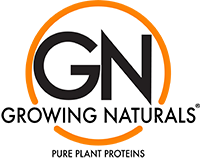
Protein & Weight Loss Surgery
If you've recently had or are planning to undergo weight-loss surgery (e.g. gastric by-pass, lap band, gastrectomy, etc.), here are important things to know before using Growing Naturals rice and pea protein as part of your diet plan.
Why do I need protein after Weight Loss Surgery (WLS)?
Protein serves several functions in the body. Aside from supporting the immune system, regulating hormones and providing normal body function, protein is the building material from which cells, tissue, muscles and organs are formed and maintained. Protein can be obtained from specific foods and is composed of 9 essential amino acids (EAAs) and 10 non-essential amino acids. The essential amino acids must be obtained from food because the body cannot make these on its own. Getting adequate protein after weight loss surgery will ensure proper nourishment and healing of wounds. It will also help to support your body’s muscle mass. When the stomach size is significantly reduced the amount of food able to fit at one time is very small at first. To compensate for this low food/calorie intake the body will inevitably break down muscle mass, so it is very important to consume enough protein to avoid a loss in muscle.
How much do I need?
Protein needs increase after weight loss surgery but the amount needed is very unique to each person. The best way to determine how much you will need each day is to talk to your Registered Dietitian or health care provider.
Should I eat or drink my protein after WLS?
Your Dietitian or health care provider will guide you as to how much protein should be coming from whole food sources versus protein powders. It is common for patients to rely heavily on protein powder supplements in the early post-operative stage due to the significant change in stomach size. Protein powders have the advantage of being able to provide a large amount of protein in a small volume of space. During this time, majority of calories may be coming from protein. As whole foods are re-introduced, protein powder may be used as needed.
Why rice and pea protein?
Since the amount and type of food one can consume after WLS is limited, it is important for foods to be nutrient dense and protein to be high quality. Rice and pea proteins can be used instead of dairy or soy-based proteins when allergies/intolerances to soy or dairy exist or based on a one’s food preferences.
Should I use rice or pea protein or both after WLS?
If you will be using these as your ONLY sources of protein (as often occurs in the early post-operative stage) then it is very important that Growing Naturals rice and pea protein be mixed at a 50/50 ratio. For example, if you need 20 grams of protein in 1 sitting, then you should mix 10g of pea- with 10g of rice protein. (An approximation is good enough unless you have a food scale and can measure the exact amounts of each powder.) This will ensure that your body is getting sufficient amounts of the 9 EAAs (needed for proper healing, nourishment and sustaining muscle mass). Once you are able to consume animal-based protein (e.g. beef, fish, etc.) on a daily basis, then there is no need to mix the rice and pea protein—either one can be used in the instructed quantities. The amino acids from the animal-based protein will help to complement those from the rice or pea protein.
Can rice or pea protein be used as meal replacements?
Growing Naturals rice- and pea proteins are mainly a source of dietary protein. They are not meal replacements on their own but they can be used to make a meal replacement by adding the proper amounts of carbohydrates, healthy fats, vitamins and minerals.
What’s the best way to prepare rice or pea protein?
Rice and pea protein are best prepared using a blender, pouring liquid first, powder second. Otherwise, a shaker bottle (with wire wisk) may suffice. Rice protein in particular contains particles which naturally repel water, making it challenging to mix by hand. Almond milk is both a delicious and popular liquid to mix with the protein powders, although any liquid of choice can be used. For recipe ideas, please visit: www.GNrecipes.com **This information is available in brochure format for health care providers or other educational opportunities. Please email dietitian@growingnaturals.com to request copies of the brochure.
